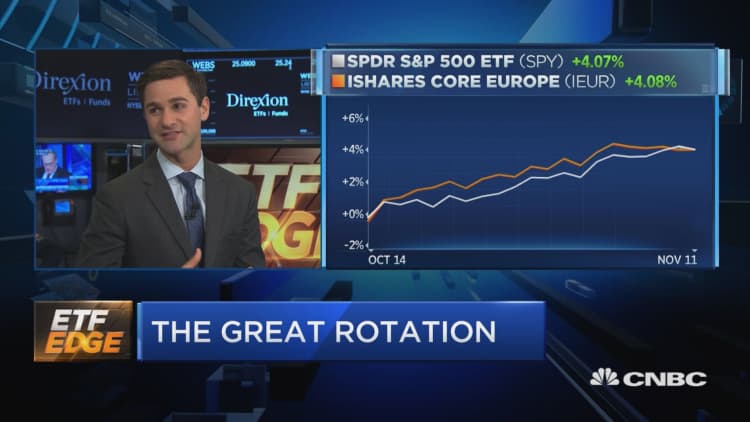
It's been a big year for the bond market.
U.S. Treasury yields, which move inversely to bond prices, have spent much of 2019 in decline, driven by a wave of easing central bank policies both domestically at the U.S. Federal Reserve and around the globe, most notably at the European Central Bank and the Bank of Japan.
The phenomenon has brought about record-low interest rates, with global debt surging to a record $250 trillion in the first six months of 2019, led by borrowing in the world's two largest economies: the United States and China.
One professional trader says the bond market's wild ride is far from finished.
"The bond phenomenon of 2019? I don't think it's over yet," Jeff Kilburg, founder and CEO of KKM Financial, said last week on CNBC's "ETF Edge."
Kilburg, who has more than 20 years of investment experience, found the biggest takeaway for the bond market this year to be the Fed's wholesale policy reversal from its plan at the end of 2018 to raise interest rate three times to putting through three successive cuts.
"How quickly it changes," Kilburg said. "But that accommodative stance, no matter what your view is on the bond market, that has really been relevant. ... This is the most money we've seen in the system in 10 years. So, I think that money has to work its way through and therefore, when you look at the 10-year note being under 2% still in comparison to some of the other foreign ... percentages like the German bund, I still think it's still attractive. If we do get to 2%, I think you see that rebalance come back in and buy those Treasurys."
Jay Jacobs, senior vice president and head of research and strategy at Global X ETFs, said longer-term bonds could take a short-term hit after a "fantastic" year of performance.
"People are starting to take those profits and move them into equities, where we're starting to see kind of a warming equity market," he said in the same "ETF Edge" interview. "I think the caution here is some of the equities that are more bond-like, like utilities, are very expensive, so people should probably look at the lower-valuation, cheaper-yielding stocks like in financials, where there's better valuations, as a bond replacement."
Kilburg agreed, calling U.S. equities "the best game in town" and adding that the completion of a phase one trade deal could spur even more of this kind of activity.
"It'd be interesting to see if we can actually have a rotation or simply book profits. We see a lot of registered investment advisors out there, active investors, trying to book those profits and find those sectors to rotate into," he said. "We saw financials really get a jump, we saw industrials really get a jump, but it's interesting about the bond market: I see a cap in the 2% yield on the 10-year note."
That means longer-dated bonds, at least in the United States, are still showing relative strength heading into the end of the year, Kilburg said — a point Jacobs preferred to interpret with a somewhat tangential investment strategy.
"The U.S. financial system is just so much better capitalized right now [than its European counterpart] and [has] such better strength. It's really a play on the U.S. consumer," Jacobs said. "We've seen a lot of good expansion of credit, a lot of opening of new bank accounts, things that are a positive for these banks in the U.S., and you just don't see any of that in Europe right now."






